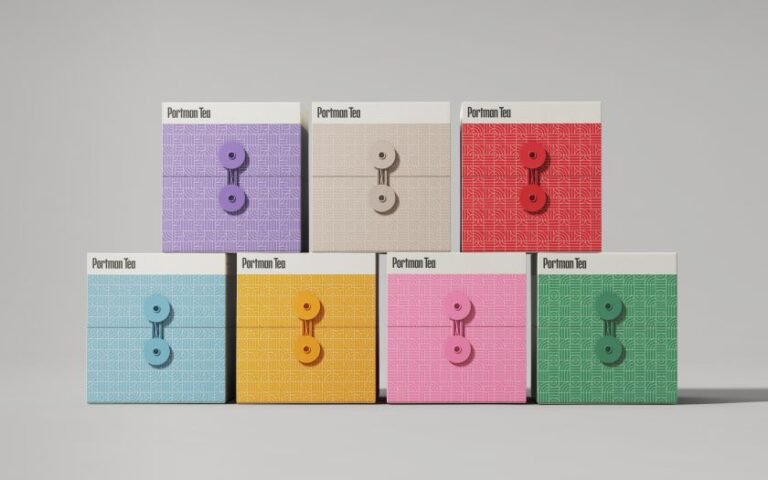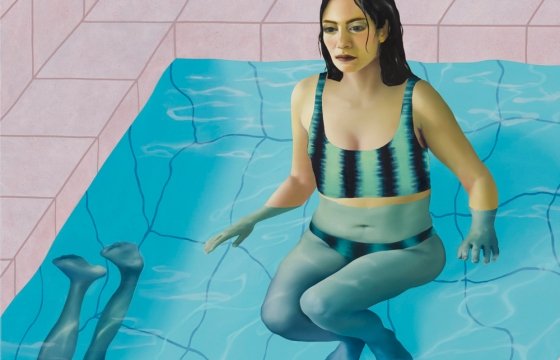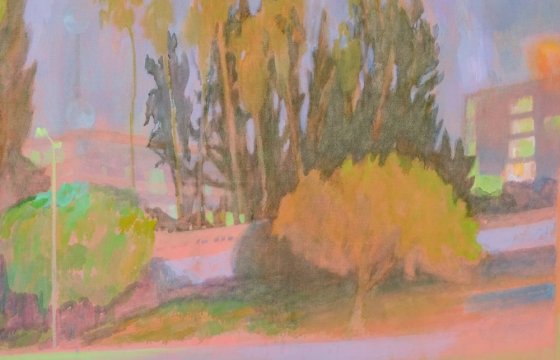

Welcome to the 293rd installment of A View From the Easel, a series in which artists reflect on their workspace. This week, artists find calm in the steady presence of a home studio and play with light as a medium in itself.
Want to take part? Check out our submission guidelines and share a bit about your studio with us through this form! All mediums and workspaces are welcome, including your home studio.
Nibha Akireddy, San Francisco, California

How long have you been working in this space?
I’ve been working out of a home studio since moving to this apartment about 10 months ago.
Describe an average day in your studio.
I love keeping my morning routine consistent. I usually wake up around 7:30 or 8am, go on a run or do a kettlebell workout in my apartment’s sunroom, and eat a big breakfast. I try to get to painting around 9:30 or 10am and paint until I get tired or hungry or have to get ready for nighttime plans. I have a CD player right next to my painting area, so I love to put on some CDs from my collection or listen to music. In full honesty, when I’m feeling a little bit more fried, I love to put on a TV show.
How does the space affect your work?
Space has always been so important to my work. Whether or not it’s apparent to an audience, I personally identify phases of my work by the place I was in, both mentally and physically, at the time. Being in a home studio, surrounded by nourishing food, plants, light, and the beautiful architecture of a San Francisco Victorian, massively influences my work. I’ve been very interested in body and nature lately, and can feel my work becoming more calm and settled in this moment.

How do you interact with the environment outside your studio?
The Mission District is filled with arts communities. I love going to openings and friends’ shows, but I’m most connected to going to my favorite bars, coffee shops, and restaurants with my friends. All of my favorite spots are filled with incredible art and decor, even if they’re not explicitly arts spaces.
What do you love about your studio?
I love being able to roll out of bed and walk five feet to my studio. I feel so much more at peace when I’m able to cook a beautiful meal for myself or take a walk or take a shower in the middle of my painting session, instead of having to show up to the studio with everything I need for the day. I’m able to paint for nine hours or for five hours or just for 90 minutes before bed if I want to. Also, I’ve really come to appreciate having work-life separation in my wardrobe because I can change out of my studio clothes before I leave the house.

What do you wish were different?
I really miss seeing other artists on my way to the studio. I’ve had an embarrassing number of days where I’ll be getting ready for bed and realize I haven’t left the house or seen anyone all day. I used to have a more communal studio space, which helped me meet some of my favorite artists and best friends. Peeking into everyone’s studios every day was so inspiring, almost like having daily little studio visits. Even though I miss being constantly surrounded by other artists, having a home studio has made me more intentional about seeing the people I love, and about seeing them outside of a work context. And now I’m really into a weekday night hangout.
What is your favorite local museum?
I love the deYoung. And it’s in the middle of the best park in the world.
What is your favorite art material to work with?
Pretty much everything I do is with oil paint.
Jeong Hur, Gowanus, Brooklyn

How long have you been working in this space?
Six months.
Describe an average day in your studio.
I try to keep a 9-to-6 rhythm, but if other work gets in the way, I still come in — even for just an hour or two. No matter how busy, I keep at least 10 to 20 hours a week for making. I often work on multiple pieces at once, balancing framing, carving, and hanji layering. I alternate between music and silence, letting the day’s mood decide.
How does the space affect your work?
The tall ceiling allows me to arrange works vertically instead of side by side, inviting new ways of seeing. Light shifts subtly through the day, casting moving shadows on the layered frames. This quiet transformation affects how I place and carve — letting time and light become collaborators.
How do you interact with the environment outside your studio?
On the way in, I pass hardware stores, construction sites, car mod shops, and fabrication studios. The workers, tools, and raw materials I see each day often sneak into my thoughts and influence how I think about structure, surface, and presence. There is an art community nearby, but I’m not yet fully connected to it — which I sometimes wish were different.
What do you love about your studio?
It’s close to home. The high ceiling lets me experiment with scale and view my work from different heights. I love how it allows space to build upward — quiet but full of possibility. I can arrange works of different sizes vertically, horizontally, and side-by-side to see how they interact. The space encourages a layered way of thinking, not just about each piece, but about how they speak to one another.

What do you wish were different?
I sometimes wish it were larger, or on the ground floor so I could open the windows. Better airflow would make the space even more breathable.
What is your favorite local museum?
I’ve always liked the New Museum. The experience of walking its vertical floors feels more fluid and intuitive than other spaces. I’m excited to see the new building reopen. I also love the Brooklyn Museum — the vast hall that reveals itself past the permanent collection always makes me feel both small and at home.
What is your favorite art material to work with?
Pinewood and hanji. I like pairing structure with softness — adding materials that either resist or yield. I’m drawn to how things fold, hold, or blur together, especially when the materials feel like memory.


